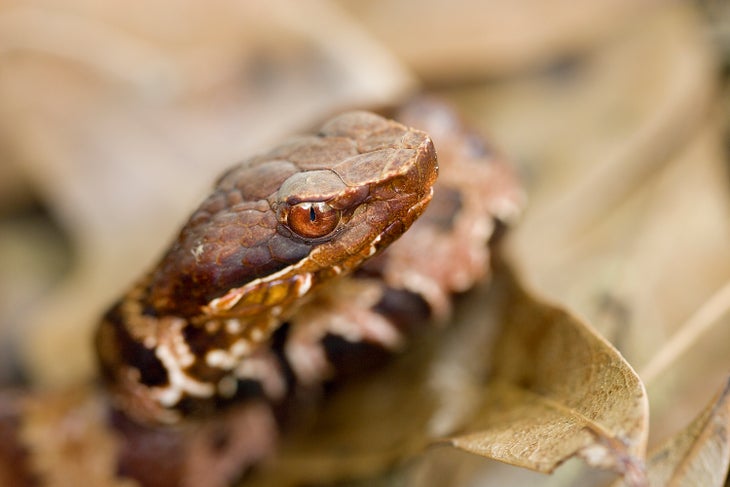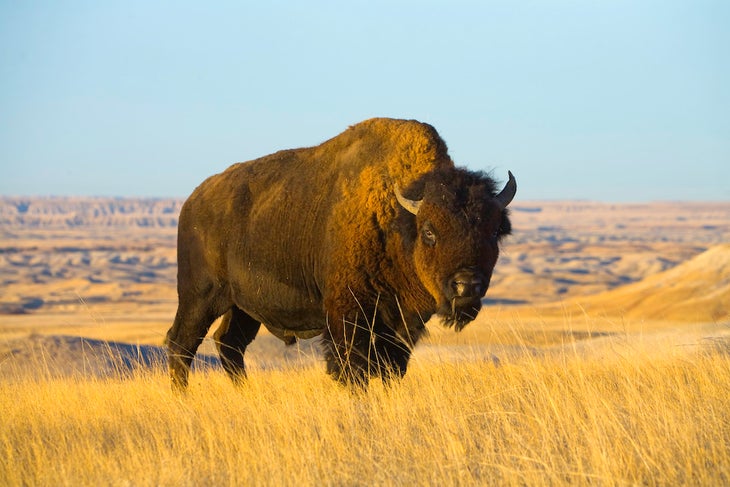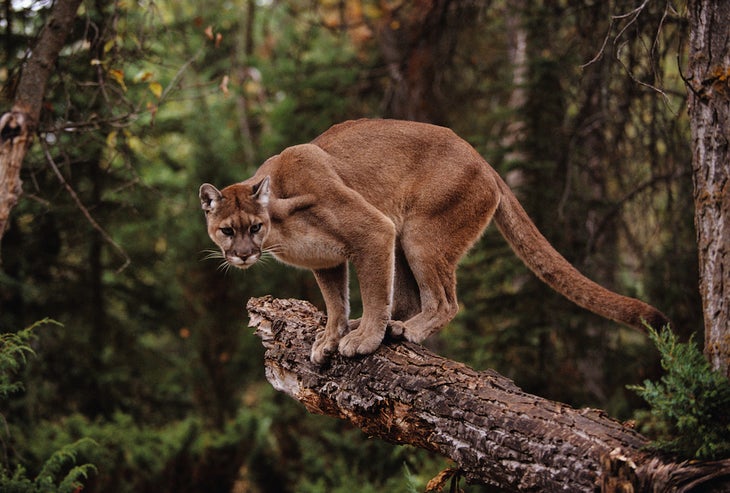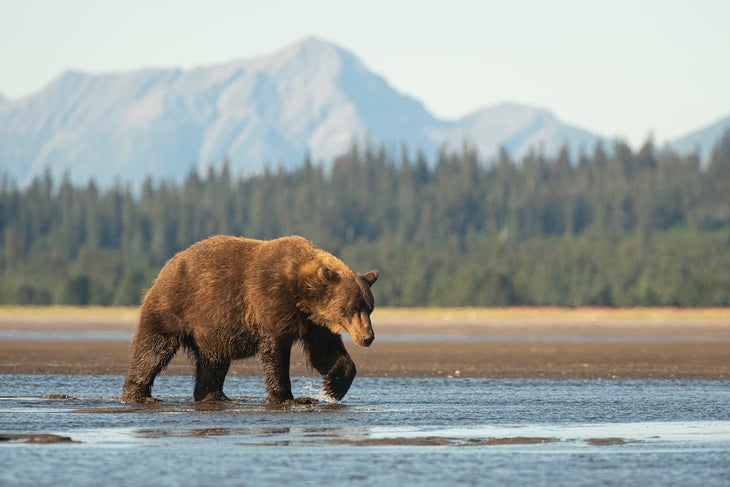Products You May Like
Get full access to Outside Learn, our online education hub featuring in-depth fitness, nutrition, and adventure courses and more than 2,000 instructional videos when you sign up for Outside+
Sign up for Outside+ today.
If you’re a regular on the trails, there’s a pretty good chance you’ve encountered a wild animal or two out there. We are hiking in their home, after all. Whether it’s a curious chipmunk at Zion, a regal elk in Grand Canyon, or a massive grizzly in Montana, it’s only a matter of time before you cross paths with wildlife.
Not all wild animals are dangerous, but some larger species have the strength to do serious bodily harm to a hiker, so it’s important to know how to react when you encounter animals in the great outdoors. Leave No Trace principles advise hikers to respect wildlife and keep a distance of at least 25 yards from large herbivores and 100 yards or more from large omnivores or carnivores. If you do find yourself within spitting distance of something big and wild, here are behaviors to look for to help decipher if you’re in imminent danger. Reminder: These behaviors, often described as aggressive, are more accurately described as defensive. Animals are rarely out to get you, they’re usually simply curious or being protective.

Snakes
Of the 30 species of venomous snakes in the U.S., 23 are rattlesnakes. But no matter what species you encounter in the outdoors, chances are it has an unfair reputation for being scary, dangerous, and on a mission to bite you. However, like most other animals, snakes are more interested in being left alone than striking out.
When hiking in venomous snake territory, keep an eye out for reptiles presenting behaviors that signify they are feeling trapped and in danger of striking: A rattlesnake might exhibit an elevated head and neck, slow, prolonged tongue flicks, and a vigorously shaking rattle, says William Hayes, venom expert and biology professor at Loma Linda University. A cottonmouth may open its jaws wide to warn potential predators with the inside of its bright white mouth.
Most pit vipers (which includes rattlesnakes, cottonmouths, and copperheads) will more than likely remain stationary, preferring not to draw attention to themselves with movement. However, if they have no avenue of rapid retreat, they may assume a coiled posture from which they can launch a defensive strike. If you do spot a coiled snake, keep your distance.
“Take two steps back, Jack!” Hayes says. That distance should keep you out of harm’s way: Most snakes are capable of striking only their body length at most (less in larger snakes) and very rarely achieve body lengths greater than 4 or 5 feet.

Bison
Sure, they may look big, fluffy, lumbering, and slow, but bison can run three times faster than humans—up to 35 mph—and use their magnificent heft to inflict serious damage if they feel threatened. And it seems like there are a few of these incidents every year.
If you are hiking in bison territory like Texas, Yellowstone National Park, or on California’s Catalina Island, take care to give the hulking mammals their space. Linda Veress, spokesperson for Yellowstone, says that’s at least 25 yards. Get any closer and a bison may respond by bluff charging, bobbing its head up and down, pawing at the ground, bellowing, or snorting. These are all warning signs that you are too close and a charge is imminent.
If a bison does start to charge, Veress says do not stand your ground. Immediately walk or run away from the animal. And if it continues to follow you, deploy bear spray toward the bison as you vacate the area.

Mountain Lions
Also known as cougars, pumas, and panthers, mountain lions are solitary creatures, so a sighting is almost as rare as an encounter. But, they do happen from time to time, so when you’re in big cat territory, be aware of your surroundings, especially near dawn and dusk.
If you spot one of these big cats stalking you, pull small children or pets close. Not only are they easy prey, but if they start running, a cougar is likely to take chase. Whatever you do, don’t run away. Instead, keep an eye out for continued stalking, hissing, or snarling. If the mountain lion crouches down, twitches its tail, pulls its ears back, or pumps its hind legs, it intends to pounce.
To help prevent that from happening, make yourself large and loud. Shout and wave your arms to signify you’re not worth challenging. Maintain eye contact while you slowly back away. If necessary, throw rocks or sticks at the cougar. If it attacks, fight back and use any weapons at your disposal to defend yourself.

Bears
Although bears are the most villainized animal in the outdoors, attacks are rare. Your chances of battling a grizzly are 1 in 2.7 million in Yellowstone National Park. But that doesn’t mean encounters don’t happen from time to time. Safety protocol depends on the type of bear, though their defensive behavior may look similar.
According to Tom Smith, professor of wildlife sciences at Brigham Young University, if they feel threatened, both black and brown bears may charge but stop short at the last minute, vocalize their displeasure at your presence, snap their jaws, or slap the ground to convey that they are ready and willing to put up a fight.
If any bear gets too close, group up with your hiking partners—there’s documented safety in numbers—and ready your bear spray. If the bear advances aggressively, deploy your spray when it’s within 25 feet.
Black bears tend to be more skittish, so if one is following you or displaying defensive behavior, shout or bang your hiking poles together to scare it away. If it still charges and you don’t have bear spray, fight back. If you’re dueling a grizzly bear, on the other hand, back away slowly until you are out of sight of it. If the grizz charges and you don’t have bear spray or are unable to deploy it, play dead. Drop facedown to the ground, lace your fingers around the back of your neck, and spread your legs so you’re harder to flip over. Don’t move until the bear has disappeared from sight.
